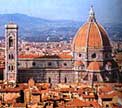Highlands Ranch High School - Mr. Sedivy
Highlands Ranch, Colorado
-
World History -
The Protestant Reformation
Martin Luther
Lutheranism

Martin Luther, by Lucas Cranach - 1529
Martin Luther (1483 - 1546)
Martin Luther was a German monk and teacher of theology. He troubled
about the possibility of not going to heaven. He led a strict life,
but was worried about sin. Luther read the writings of early Christian
theologians, including St. Augustine, and the Bible. He found the
answer he was looking for in Paul's Letter to the Romans (Romans
1:17 - "The righteous shall by his faith.") Only faith (in the ultimate
goodness of Jesus), not good deeds, could save a person. No good
works, rituals, etc. would save a person if they did not believe.

Martin Luther prepares to burn the papal bull.
Overall, Luther was a rather crude man. He had no
trouble with talking about taking up arms against those who opposed
him. He also saw fit to use foul language to combat evil. For example,
he dismissed the Jewish rabbis' interpretations of Scripture as
"Jewish piss and sh_ _." He thought his physical ailments were caused
by the devil, who was trying to stop him. Before Martin Luther died,
when he was very ill, he told his wife, "I am fed up with the world,
and it with me. É I am like a ripe stool, and the world is like
a gigantic anus, and so we're about to let go of each other."
The Beginnings
Indulgences
Tetzel, a friar, sold indulgences. Doctrines of indulgences taught
that Christ and the saints had stored up a treasury of merit. Indulgences
could reduce the amount of time spent in purgatory; did not bring
forgiveness of sin. Indulgences were sold to raise money for the
church's increasing expenses. (They were like car salesmen, and
lied about them.)

ALBRECHT DURER: Engraving of Desiderius Erasmus.
(Although Erasumus
fiercely attacked philandering and corruption among the clergy,
his dislike of violent reform made it impossible for him to give
anything but qualified support to Martin Luther. He remained loyal
to the Church of Rome and wrote: "I laid a hen's egg; Luther
hatched a bird of quite a different species.")
The 95 Theses
Luther questioned indulgences and corruption. On October 31, 1517
Luther posted, on a church door in Wittenburg, his 95 theses saying
salvation is achieved through faith alone. He just wanted the church
to clean up their act, but the church didn't want to. (Posting things
on the church door was really no big deal, that is where people
posted all kinds of notices.) The church basically laughed at him,
but the people didn't laugh.) The Church was mad, but the people
followed Luther. These people became known as "Lutherans."


Left: Excerpt from the 95 Theses.
Right: RAPHAEL: Pope Leo X (Medici) with two cardinals - 1518
Diet of Worms
In 1520 Pope Leo X ordered Luther to give up his beliefs. Luther
burned the order in front of a cheering crowd and was excommunicated
by Leo X. In 1521 Charles V, the Holy Roman Emperor, declared Luther
an outlaw when he wouldn't give up his views. Martin Luther went
into hiding in a castle (castle of Frederick of Saxony, a German
Prince) and translated New Testament into German, making it possible
for more people to read the Bible.

1530 - Charles V, far left, discusses a point of
dispute in the Confession of Augsburg.
(The last Protestant attempt to reconcile with the Church of Rome)

LUCAS CRANACH THE YOUNGER: Martin Luther (far left),
Philipp Melanchthon (near left), and other German reformers gather
around John Frederick I, elector of Saxony - 1540s
Acceptance of Reforms
Some local German churches accepted Luther's ideas. Lutheranism
won enormous support and spread throughout Europe because:
 People didn't like all their money going to Rome.
People didn't like all their money going to Rome.
 They didn't like the Italians controlling all church property.
They didn't like the Italians controlling all church property.
 German princes saw a chance to get church property. In 1529, German
Princes issued a formal "protest" against efforts by the Church
to suppress the reforms.
German princes saw a chance to get church property. In 1529, German
Princes issued a formal "protest" against efforts by the Church
to suppress the reforms.
The reformers came to be known as "Protestants."
1. What Was the Renaissance?



![]() 9375 South Cresthill Lane
9375 South Cresthill Lane ![]() Highlands Ranch, Colorado 80126
Highlands Ranch, Colorado 80126 ![]() 303-471-7000
303-471-7000






